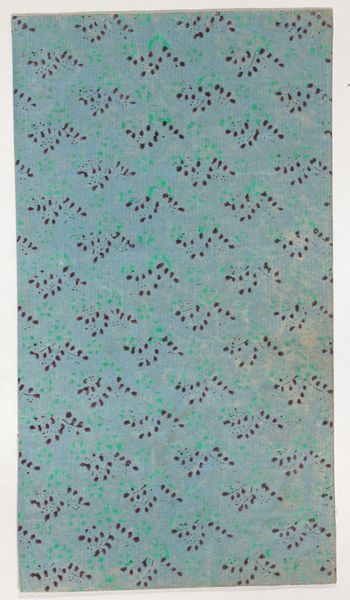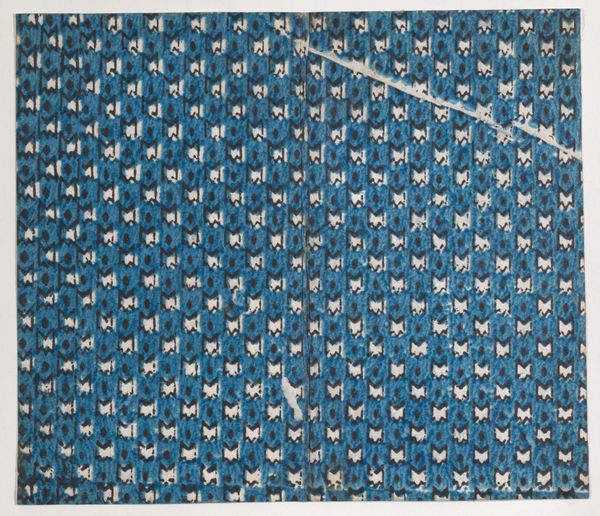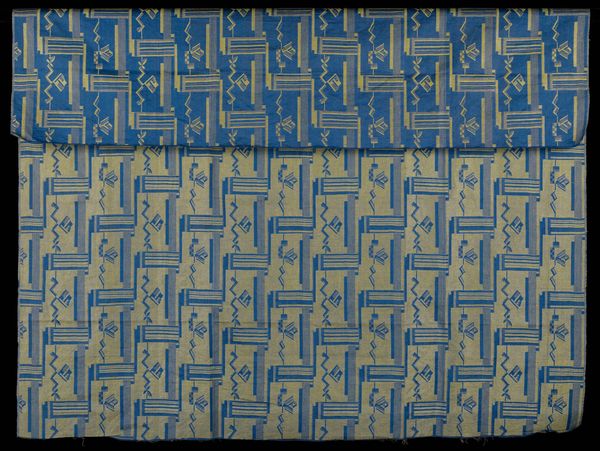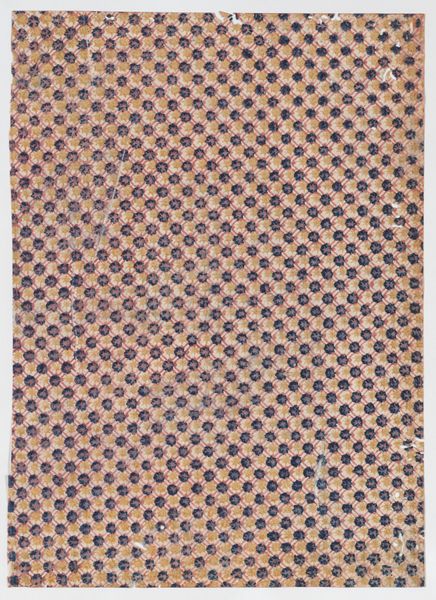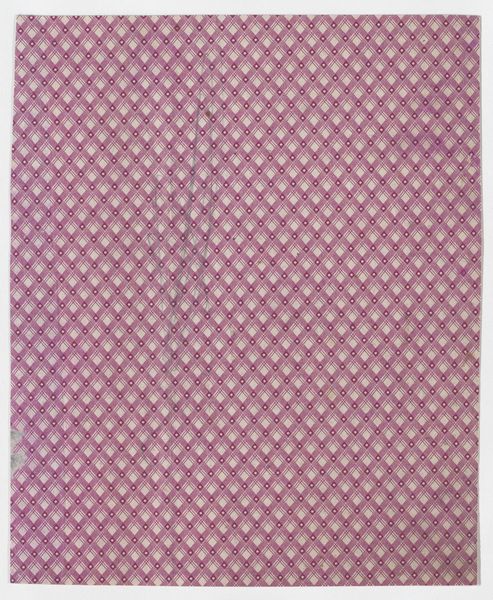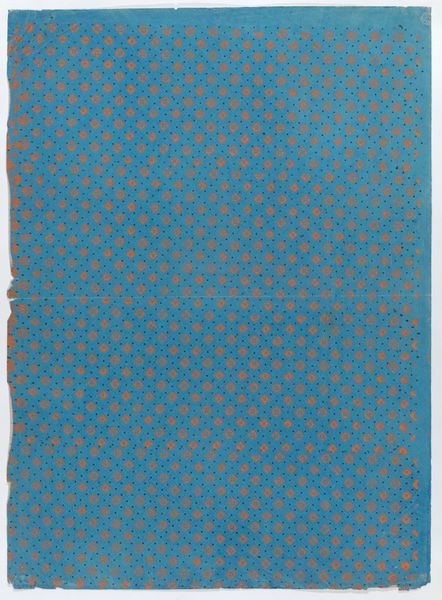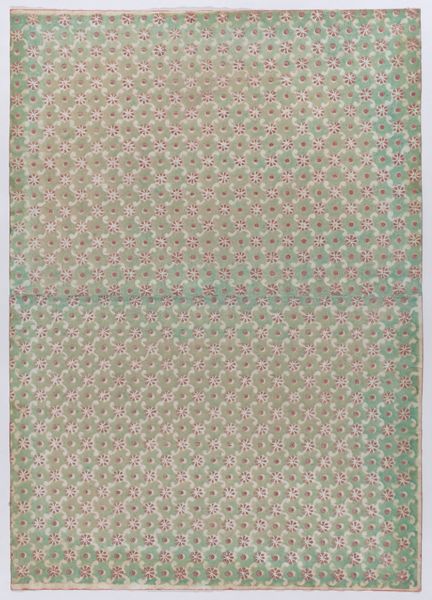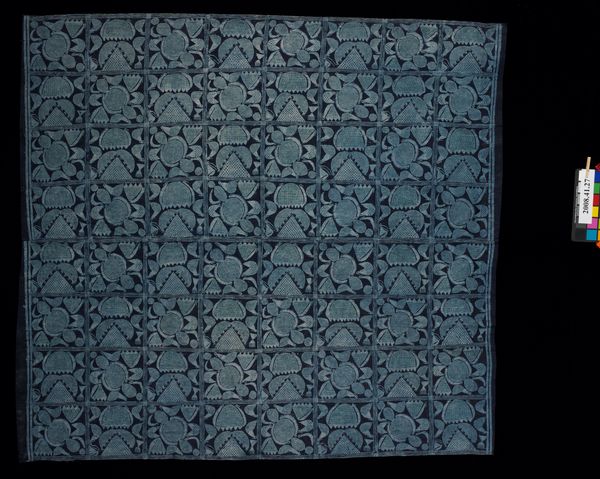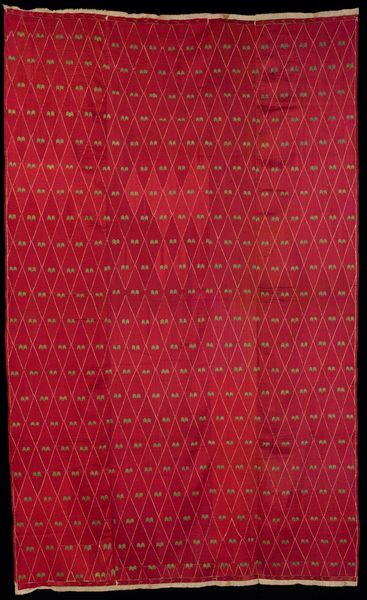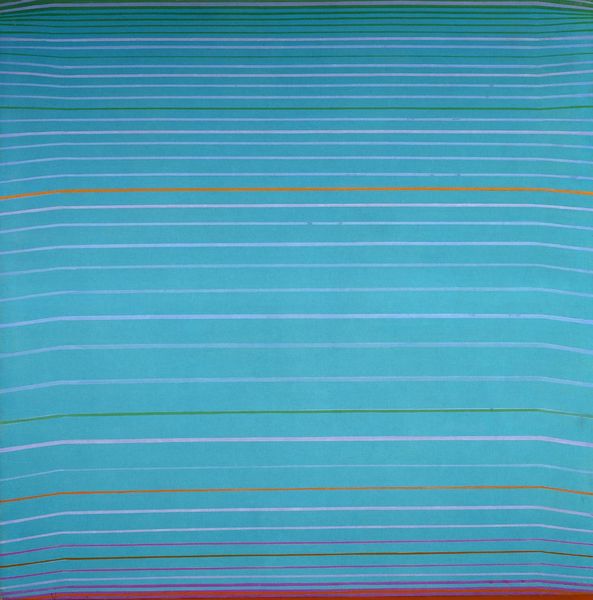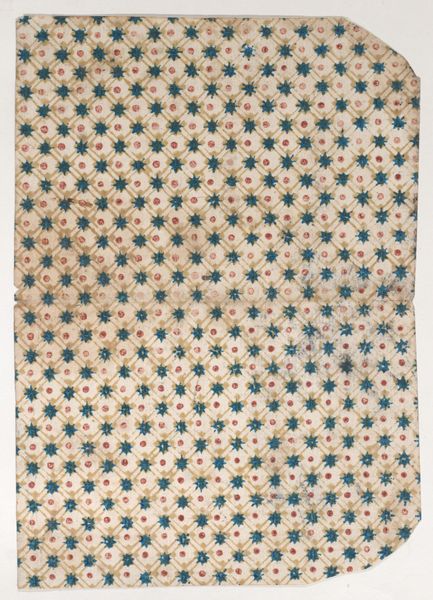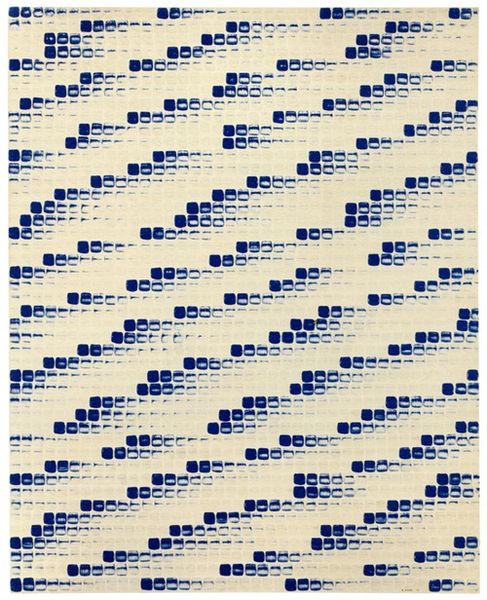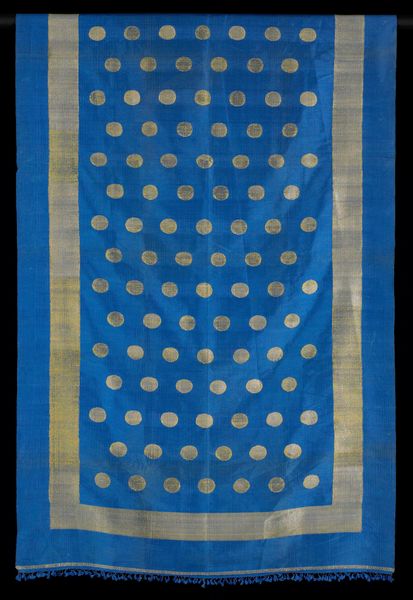
acrylic-paint
#
natural stone pattern
#
contemporary
#
pattern
#
acrylic-paint
#
geometric pattern
#
abstract pattern
#
minimal pattern
#
organic pattern
#
geometric
#
geometric-abstraction
#
repetition of pattern
#
vertical pattern
#
pattern repetition
#
layered pattern
#
combined pattern
#
modernism
Dimensions: 210 x 200 cm
Copyright: Carles Delclaux Is,Fair Use
Editor: We’re looking at “El sudari de Sant Is,” an acrylic painting from 2011 by Carles Delclaux Is. The repetitive pattern creates a fascinating visual texture; the colours shift from light to dark blues. What’s your take on the composition? Curator: Indeed. Notice how the formal elements—the carefully calibrated progression of value, the consistent ovoid shape, the rigid grid—construct a delicate tension. The subtle variation in hue, moving from a lighter sky-blue to a deep indigo, offers a sense of spatial recession despite the work's commitment to the two-dimensional plane. Editor: I see what you mean. It's flat, but there's also depth because of the color. How would you read that tension between flatness and depth? Curator: The tension can be interpreted through a lens of modernism’s self-awareness. It's almost as if the painting is announcing its own artifice. By simultaneously asserting flatness and suggesting depth through value, it prompts the viewer to consider the very act of perception and the conventions of representation. The repetition of forms invites semiotic analysis – what might these ovoids signify, given their regimented arrangement? Editor: That makes a lot of sense. I didn’t consider that the repetition could also have meaning. Curator: The artist's strategic manipulation of form, color, and composition invites deeper consideration of modernism's enduring engagement with visual language. Editor: This piece really exemplifies how much you can unpack just by analyzing form! Curator: Precisely. It is through such visual grammar that we decipher the artist's intent and, indeed, the broader aesthetic dialogue.
Comments
No comments
Be the first to comment and join the conversation on the ultimate creative platform.
